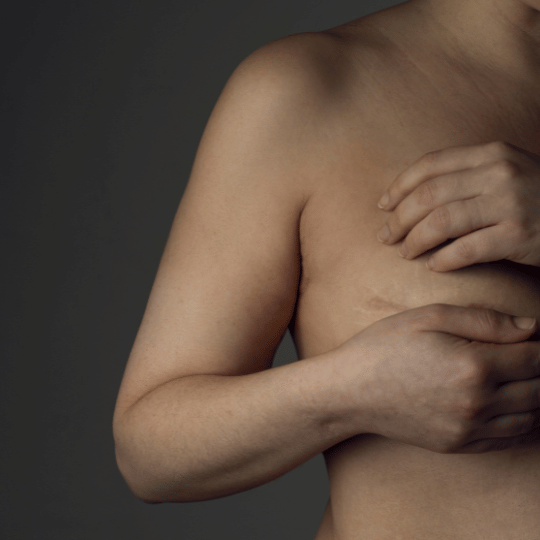October is Breast Cancer Awareness Month and it is also National Physical Therapy Month, so it seems fitting that this month’s blog is about both!
Breast Cancer Awareness
One in eight women and one in one thousand men will be diagnosed with breast cancer over the course of a lifetime.1 Survivorship is on the rise thanks to early detection and improvements in the treatment of breast cancer. The actual treatment plan is carefully individualized to the patient by the physician. Treatment options include surgeries (biopsy, lumpectomy, mastectomy, reconstruction), radiation and/or chemotherapy. These treatments can lead to taxing side effects both physically and psychologically.
Side Effects of Breast Cancer Treatment
- Scar tissue adhesions
- Pain: shoulder, chest, back, neck or arm
- Restricted ROM or stiffness of the shoulder, neck, spine
- Lymphedema
- Weakness and fatigue
- Neuropathy
- Axillary Web Syndrome (cording)2
- Bowel and Bladder changes
- Dyspareunia (pain with intercourse)
- Postmastectomy pain syndrome (PMPS)3
How Can Physical Therapy Help?
Rehabilitation
Even before surgery, physical therapy can help. Prehabilitation is defined as the time of care that occurs between the time of diagnosis and actual breast cancer treatment. Evidence is showing that prehabilitation can improve psychological and physical outcomes of treatment. 4,5 The goal of physical therapy in prehabilitation is to:
- Assess baseline measurements: ROM of shoulders spine, and circumference of both upper extremities.
- Identify any impairments that may affect recovery such as muscle weakness, postural dysfunction and pain.
- Educate in lymphedema and risk reduction.
- Establish an exercise program for prior to and after surgery.
Post-Surgical Physical Therapy
The goal of physical therapy after surgery and during breast cancer treatment (radiation, chemotherapy) is to minimize the side effects listed above and to optimize function. Physical Therapy interventions include:
Manual Therapy: Manual Therapy is defined as skilled hands on treatment to the joints, muscles, fascia and scar. This can help with restricted range of motion, pain and swelling.6
Lymphedema Treatment: This treatment includes manual lymphatic drainage, compression bandaging, evaluation for garments, and instruction in exercise and self-care.
Postural Training: Physical therapy will address the postural changes after surgery with postural specific exercises and ergonomic assessments.
Exercise: Exercise through all the phases (prior, during and after) is of vital importance and has been proven to minimize, or eliminate the side effects of treatment.7,8Physical therapy will provide an individualized programs with specific goals.
Survivorship
Survivorship can be one of the most complicated aspects after going through the cancer treatments. This is mainly because it is different for each individual. Returning to “normal” life and activities is extremely important. Physical therapy can help with some of the issues that can affect quality of life after breast cancer treatment is completed.
Pelvic Floor Physical Therapy: A pelvic floor PT specialist can address the issues that can affect sexual health (most commonly pain with intercourse). Changes in bowel and bladder function can also be effectively treated.
More Exercise: Staying active and consistent with a good exercise program has been well established on improving the quality of life after breast cancer treatments.9 Again, physical therapy can play a vital role in developing a comprehensive cardiovascular and strength training program for survivors.
N2 Physical Therapy
N2 Physical Therapy now has four locations. At each location there are physical therapists certified in lymphedema management; and all of the physical therapists are trained in pelvic floor physical therapy. Please do not hesitate to contact any of our offices if you or a loved one are interested in physical therapy for breast cancer.
References
http://www.breastcancer.org/symptoms/understand_bc/statistics
http://www.breastcancer.org/treatment/side_effects/aws
Santa Mina et al; PM& R Volume 9, Issue 9, Supplement 2, Pages S305–S316
Silver, Julie: American Journal of Physical Medicine & Rehabilitation Copyright * 2013 by Lippincott Williams & Wilkins
Bearskens CH et al: The effeicacy of physiotherapy upon shoulder function following axillary dissection in breast cancer, a randomized controlled study. August 2007 volume 7: 166
Courneya KS, Mackey JR, Jones LW. Coping with Cancer: Can Exercise Help? The Physician and Sportsmedicine (28)5, 2000
Kirshbaum MN et al: A review of the benefits of whole body exercise during and after treatment for breast cancer. Journal of Clinical Nursing, 2007
Deili-Conwright CM: Exercise after breast cancer treatment: current perspectives. Breast Cancer (Dove Med. Press) 2015, 7. 353-362

